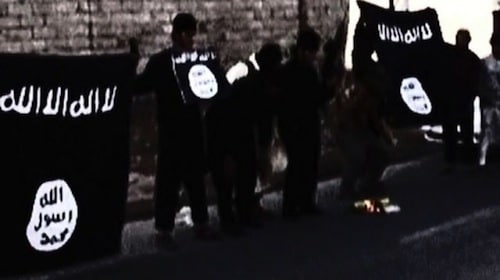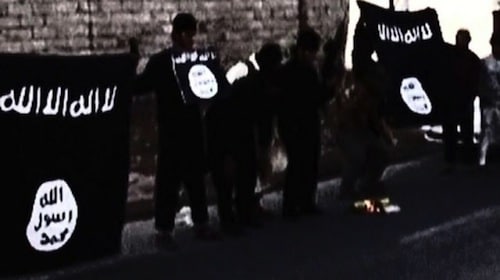
Americans have been living in a country that has not known peace since 9/11, when President George W. Bush and his posse of neoconservatives delivered the message to the world that “you are either with us or against us.” The threat was coupled with flurry of hastily conceived legislation that opened the door to the unconstitutional “war on terror” carried out at the whim of the Chief Executive, a conflict which was from the start conceived of as a global military engagement without end.
Bush and his handlers might not have realized it at the time but they were initiating a completely new type of warfare. To be sure, there would be fighting on the ground worldwide against an ideologically driven enemy somewhat reminiscent of communism, but there would also be included “regime change” of governments in countries that were not completely on board with the direction coming out of Washington. Instead of invading and occupying a country in the old-fashioned way, so the thinking went, far better to just knock off the top levels and let the natives sort things out while acting under direction from the pros in Washington.
Even though “regime change” in Iraq and Afghanistan did not work out very well, Bush saw himself as a triumphant war leader with his vainglorious “Mission Accomplished,” and he later dubbed himself the “decider.” He insisted that his reelection in 2004 when running against a weak John Kerry was a validation of his policies by the American people, but one has to wonder how many voters really understood that they were signing on for perpetual war that would of necessity also diminish their most cherished liberties.
Nobel Peace Prize winner and US President Barack Obama followed Bush and made it clear that there would be no stepping back from a policy of proactively “protecting” the American people. Obama and his Secretary of State Hillary Clinton destroyed Libya, a disaster that is still playing out, increased involvement in Syria, and introduced death by drone for both American citizens who have transgressed and random foreigners who fit a profile. And to eliminate any pushback to what he was doing, Obama relied on invoking the state secrets privilege to block legal challenges more times than all his predecessors in office combined.
And now we have President Donald Trump, whose foreign policy is particularly unarticulated, though in many ways similar to that of his predecessors. The United States is increasing its involvement in Afghanistan, where it has been engaged for longer than in any previous war, is threatening both Iran and North Korea with annihilation, and is hopelessly entangled in Trump’s pledge to completely eliminate ISIS. Indeed, destroying ISIS (and al-Qaeda) has been the one clearly articulated part of the Trump foreign policy, though there are also occasional assertions that it should be accompanied by yet one more try at regime change in Damascus.
And the grand tradition of using military might to back up diplomacy has certainly found little favor, so much so that it is certainly clear even to the supine American public and a risk averse congress that there is something wrong in Foggy Bottom. It is astonishing to note the mainstream media, which reviled George W. Bush when he was in office, describing him currently as a voice of moderation and restraint due to his recent criticism of the White House. You can’t go wrong if you pile on Trump.
Even the US media has been reluctantly reporting that ISIS has been rolled back in Syria by the joint efforts of the Syrian Army and the Russian air force with the United States and its allies playing very much secondary roles in the conflict. The Russians have, in fact, complained that Washington seemed just a tad disinterested in actually cooperating to destroy the last remnants of ISIS in the few areas that the group still controls, citing most recently an alleged incident during the Syrian government liberation of the town of Abu Kamal in which US air assets on site appear to have allowed ISIS fighters to escape.
The shambles of American policy as it applies to the Middle East was highlighted by yet another similar and particularly bizarre episode that was revealed initially by the BBC on Monday of last week. In early October, when the Syrians and Russians were closing in from the west on Raqqa, the “capital” of the ISIS caliphate while the U.S supported Syrian Democratic Forces (SDF), which predominantly consists of the Kurdish militias, was closing in from the east, a deal was reportedly struck to permit an evacuation of the remaining ISIS fighters and their families.
According to the BBC investigative report, the SDF and Kurds were wary of clearing out the remaining fighters from the ruins of the city and so negotiated an agreement whereby the ISIS fighters from Syria and Iraq and their families would be able to leave and be allowed to either go home and face the consequences or proceed to ISIS controlled areas about one hundred miles away. The objective was to avoid a final assault from the air and using artillery that would have produced a bloodbath killing thousands, including large numbers of civilians. The agreement stipulated that only ISIS fighters who were local would be allowed to leave. Others, referred to as “foreigners,” from Europe, Africa or Asia would have to surrender in order to avoid their going free and getting involved in new terrorist activity after returning home.
US and British military advisers who were with the SDF and Kurds reported, somewhat improbably, that they had not been party to the negotiations, that it was “all-locals,” though they later admitted that there had been some involvement on their part. In the event, trucks and busses were assembled on October 14th, formed into a convoy, and were loaded with more than 4,000 fighters and families. More than 100 ISIS-owned vehicles also were allowed to leave and there were ten trucks filled with weapons. The convoy stretched for more than four miles and film footage shows trucks pulling trailers filled with militants brandishing their weapons. The fighters were not allowed to display flags or banners but they were not forced to disarm and in fact loaded all the vehicles with as many weapons as they could carry, so much so that one truck broke its axle from the weight. The BBC reported that “This wasn’t so much an evacuation – it was the exodus of so-called Islamic State.”
The drivers reported that they were abused by the ISIS fighters, many of whom were wearing explosive belts, and they also claimed that there was a large percentage of foreigners among those escaping. Various drivers told the BBC that there were French, Turkish, Azerbaijani, Pakistani, Yemeni, Saudi, Chinese, Tunisian and Egyptian nationals among their passengers. The evacuees made it safely to ISIS controlled territory and presumably will be ready, willing and able to fight again.
The escape of the Islamic State from Raqqa is, to put it mildly, bizarre. One might accept that avoiding the carnage that would have been part and parcel of an assault on the shattered city should have weighed heavily on the decision making by the attacking forces, but allowing hardened fighters to escape with their weapons would hardly seem a good way to end the conflict. In May, US Defense Secretary James Mattis said on television that the war against ISIS was one of “…annihilation. Our intention is that the foreign fighters do not survive the fight to return home to north Africa, to Europe, to America, to Asia, to Africa. We are not going to allow them to do so.”
Well, Mattis was possibly lying back then, or at least saying what he thought would play well on television and in the newspapers. On November 14th, the day after the BBC story about Raqqa broke, he lied again, saying that the United States is in Syria under a U.N. authorization to fight ISIS, which is not true. The Russians have been invited into the country by its legitimate government but the US is not there legally. The Turks are claiming that there are 13 US military bases already in Syria, some of which are permanent.
Mattis added to his bit of fiction by stating, somewhat ominously, that while the first phase of the ISIS war is coming to an end “Basically we can go after ISIS. And we’re there to take them out. But that doesn’t mean we just walk away and let ISIS 2.0 pop back around. The enemy hasn’t declared they’re done with the war yet. So, we’ll keep fighting them as long as they want to fight.”
A waggish friend of mine suggested that Mattis might be deliberately selectively releasing ISIS fighters so the US will never have to leave Syria, but my own theory is somewhat different. I think that Washington, which has done so little to defeat ISIS, wants some threat to continue so it can keep its own “resistance forces” in place and active to give it a seat at the table and a voice at the upcoming Geneva discussions for a political settlement in Syria. Otherwise Washington will be outside looking in. The unspeakable Nikki Haley at the U.N. appears to endorse that line of thinking by asserting that Washington will continue “to fight for justice” in Syria no matter what the rest of the world decides to do.
Does this mean that we can expect considerable fumbling and a game with no exit strategy, something like a replay of Afghanistan, Iraq and Libya? You betcha.
Reprinted with author’s permission from Unz Review.

